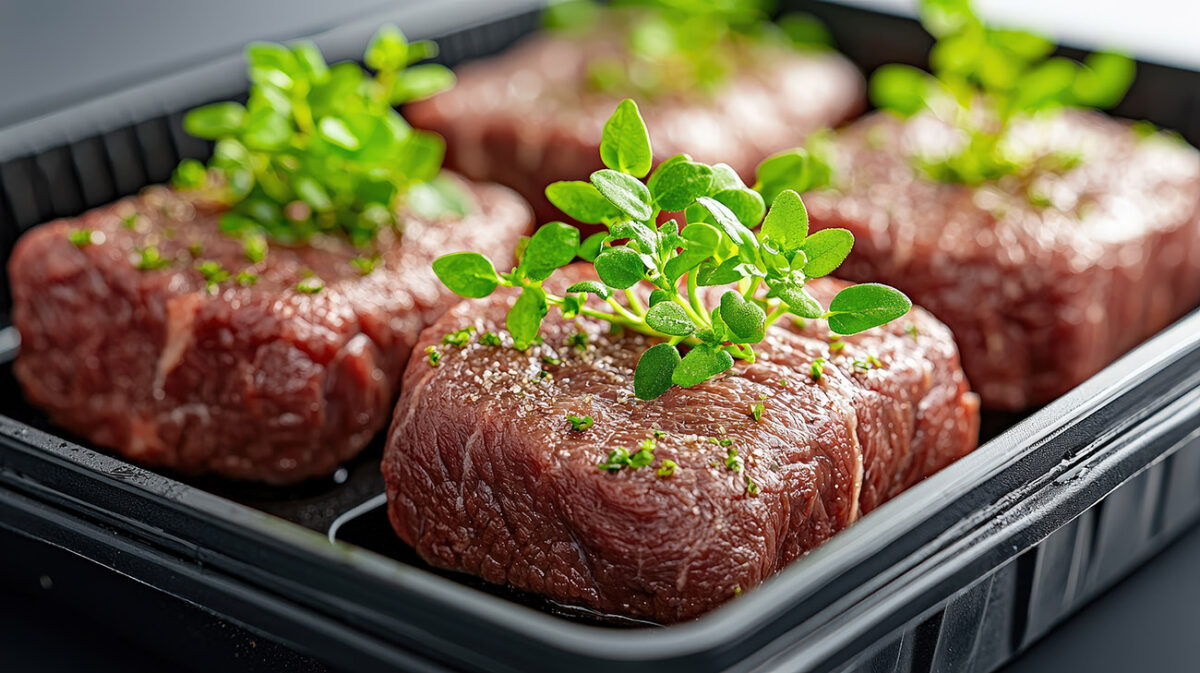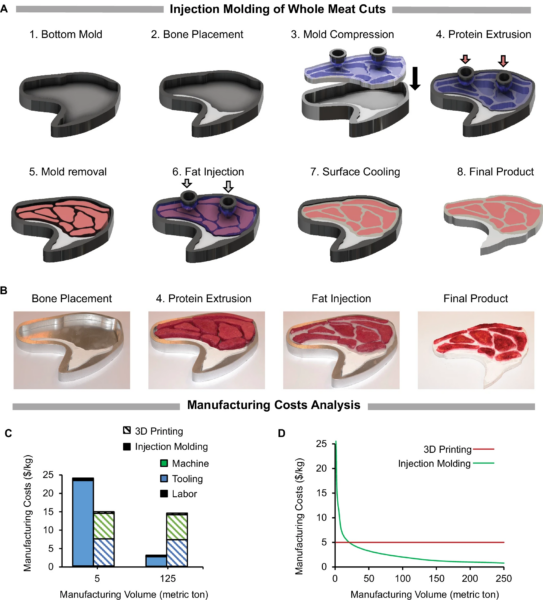Injection Molding in Plant-Based Meat Production

As one of the most adaptable polymer processing techniques, injection molding could transform plant-based meat production.
As the global population grows rapidly, meat consumption is projected to increase by 50% over the next two decades, creating significant challenges. However, traditional meat production continues to strain the environment by contributing 14.5% of global greenhouse gas emissions and consuming 20% of global freshwater. While plant-based alternatives successfully mimic ground meat products, creating realistic whole cuts—which account for 54% of the meat market—remains daunting.
You can also read: Optimizing Agri-Food Value Chains with Digital Twins
Meeting the Rising Demand for Meat
Researchers have successfully transformed injection molding, originally a polymer manufacturing technique, into a tool for producing whole-cut meat analogs. Unlike 3D printing, which is inherently slow and expensive, injection molding enhances production speed significantly while drastically reducing costs. By using this method, producers can lower the price of plant-based meat analogs from $38/kg via 3D printing to an affordable $9/kg. Consequently, injection molding makes large-scale production both practical and economically feasible.
Creating Realistic Meat with Advanced Materials
This innovative approach relies on the development of two advanced metamaterials that replicate essential properties of real meat and fat.
- Proteoleogel mimics the binding properties of animal fat, retaining structure during cooking and providing a realistic texture for plant-based meat.
- Low-Temperature Meat Analog (LTMA), created through low-temperature extrusion, replicates the intricate fiber structure of muscle tissue.
By injecting these materials into precise molds, producers can craft cuts like T-bones, lamb chops, and Wagyu steak, achieving both impressive texture and visual appeal.

Design and economic analysis of injection molding in whole meat cut manufacturing. Courtesy of Metamaterial-based injection molding for the cost-effective production of whole cuts.
Driving Down Costs and Environmental Impact
Injection molding dramatically reduces production costs, especially at larger scales, by distributing fixed costs across more units efficiently. Additionally, this method minimizes labor and energy consumption compared to 3D printing, further improving cost efficiency.
Environmentally, injection-molded meat analogs offer transformative benefits. Transitioning to these alternatives could reduce greenhouse gas emissions by 98% and freshwater consumption by 97%, helping meet protein demand sustainably.
Winning Over Consumers
Consumers are already responding positively to injection-molded meat analogs, which closely replicate the texture, flavor, and appearance of real meat. In blinded taste tests, 43% of participants preferred LTMA-based analogs over traditional beef, while 57% still favored real meat. These results mark significant progress, demonstrating the appeal of high-quality plant-based options.
Injection molding allows producers to customize meat cuts with remarkable precision, enhancing both functionality and consumer appeal. For instance, injection-molded Wagyu steak replicates marbled fat distribution, delivering the texture, flavor, and cooking performance of its real counterpart.
Shaping the Future of Food Technology
By leveraging injection molding for the production of whole-cut meat analogs, researchers are revolutionizing sustainable food technology. This innovation combines cost efficiency, scalability, and sensory appeal, offering a groundbreaking alternative for the global protein market. As this technology gains traction, it will help address the world’s protein needs while preserving vital environmental resources.
To read the complete study click here.
